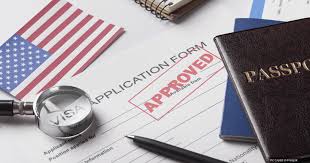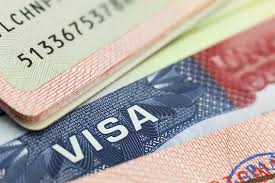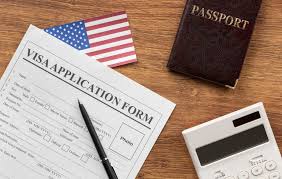How to Apply for a U.S. Student Visa: A Complete Guide for International Students

A U.S. student visa allows foreign nationals to enter the United States to pursue education at an accredited institution. The two primary types of student visas are the F-1 visa for academic studies and the M-1 visa for vocational or non-academic studies. Both visas are designed for students who have been accepted into a U.S. school and intend to study for a limited period.
In this article, we will provide a comprehensive guide on how to apply for a U.S. student visa, the types of student visas available, eligibility requirements, and the application process to ensure you have a smooth experience.
Types of U.S. Student Visas
There are two main types of student visas for foreign nationals who wish to study in the U.S.:
F-1 Visa (Academic Student Visa): The F-1 visa is for individuals who wish to study in the U.S. at an accredited college, university, or other academic institution. This visa is typically issued for the length of the academic program and can be extended if necessary. F-1 visa holders are allowed to work part-time on-campus and, in some cases, participate in practical training programs like OPT (Optional Practical Training) or CPT (Curricular Practical Training).
M-1 Visa (Vocational Student Visa): The M-1 visa is for individuals pursuing non-academic or vocational studies, such as technical courses or training programs at a U.S. institution. Unlike the F-1 visa, M-1 visa holders cannot work during their stay in the U.S., and their studies must be limited to the specific vocational program for which the visa was issued.
Eligibility Requirements for a U.S. Student Visa
Before applying for a U.S. student visa, you must meet certain eligibility criteria. Here are the primary requirements for obtaining an F-1 or M-1 visa:
Acceptance into a U.S. School: You must first be accepted into a Student and Exchange Visitor Program (SEVP)-certified U.S. school. The school will provide you with an I-20 form, which is required to apply for a student visa.
Prove Financial Ability: You need to prove that you can financially support yourself and your dependents (if applicable) while studying in the U.S. This includes showing evidence of funds to cover tuition, living expenses, and other costs during your stay.
Intention to Return Home: As a non-immigrant visa holder, you must demonstrate that you plan to return to your home country after completing your studies. This includes providing evidence of strong ties to your home country, such as family, a job, or property.
English Proficiency: While not always a strict requirement, you may need to demonstrate proficiency in the English language, either through standardized tests like TOEFL or IELTS or by having completed previous studies in English.
No Criminal History: Applicants must have a clean criminal record. If you have previously violated U.S. immigration laws, it may impact your eligibility for a student visa.
The U.S. Student Visa Application Process
The process for applying for a U.S. student visa generally involves several steps, including securing your place at a U.S. school, obtaining the necessary forms, and attending a visa interview. Below is a step-by-step guide to help you through the application process:
Step 1: Apply and Get Accepted to a U.S. School: The first step in the process is to apply to an SEVP-certified school in the U.S. Once you are accepted, the school will issue you an I-20 form (Certificate of Eligibility for Nonimmigrant Student Status). This form is essential for applying for your student visa.
Step 2: Pay the SEVIS Fee: The next step is to pay the SEVIS (Student and Exchange Visitor Information System) fee. The SEVIS fee supports the system used to track international students in the U.S. You can pay this fee online through the SEVIS website. Once paid, you will receive a confirmation, which you must keep for your visa interview.
Step 3: Complete the DS-160 Form: After paying the SEVIS fee, you must complete the DS-160 form, which is the online non-immigrant visa application form. The form requires personal and travel information, and once completed, you will receive a confirmation page with a barcode, which you must print and bring to your visa interview.
Step 4: Pay the Visa Application Fee: In addition to the SEVIS fee, you must also pay the visa application fee. The amount of this fee depends on your nationality and the type of student visa you are applying for. You can pay this fee at designated banks or online, depending on your country of residence.
Step 5: Schedule Your Visa Interview: Once you have completed the DS-160 form and paid the necessary fees, you need to schedule a visa interview at your local U.S. embassy or consulate. Be sure to schedule the interview well in advance of your intended travel date, as there may be a wait for available slots.
Step 6: Gather Required Documents: Before your visa interview, you must gather the following documents:
Valid passport: Your passport must be valid for at least six months beyond your intended stay in the U.S.
DS-160 confirmation page: Print the confirmation page with the barcode from your DS-160 application.
Visa application fee receipt: Proof of payment for the visa application fee.
SEVIS fee receipt: Confirmation of payment for the SEVIS fee.
I-20 form: The Certificate of Eligibility for Nonimmigrant Student Status issued by your school.
Passport-sized photo: A photo that meets U.S. visa requirements.
Financial evidence: Bank statements, affidavits of support, or other documents showing that you can financially support your studies in the U.S.
Proof of ties to your home country: Documents showing your intention to return home after your studies, such as a job offer or family connections.
Step 7: Attend the Visa Interview: The visa interview is a critical part of the application process. During the interview, a U.S. consular officer will ask questions about your background, your academic program, and your plans after completing your studies. Be prepared to answer questions clearly and truthfully. Bring all necessary documents and be confident in explaining why you want to study in the U.S. and how you plan to support yourself during your stay.
Step 8: Wait for Visa Approval: After your interview, the consular officer will determine whether to approve your visa application. If your visa is approved, the embassy will affix the student visa to your passport, and you can begin making travel arrangements. Processing times vary, so be sure to check the status of your visa application and plan ahead.
Step 9: Receive Your Visa and Travel to the U.S.: Once you receive your visa, you can make arrangements to travel to the U.S. Remember to carry all the necessary documents with you when you travel, including your I-20 form, passport, and visa.
Tips for a Successful U.S. Student Visa Application
Here are some tips to help you increase your chances of success in obtaining a U.S. student visa:
Start early: The application process can take time, so start early to ensure you have enough time to gather all the required documents and schedule your interview.
Be clear about your purpose: During your interview, clearly explain the purpose of your studies and how they relate to your future goals. Be prepared to discuss why you chose the specific program and school.
Provide sufficient financial documentation: It’s crucial to prove that you have the financial means to support yourself during your studies. Provide clear evidence of your ability to cover tuition, living expenses, and other costs.
Demonstrate strong ties to your home country: To increase your chances of approval, show that you have a compelling reason to return to your home country after your studies, such as family, job prospects, or other responsibilities.
Common Reasons for U.S. Student Visa Denials
There are several reasons why a U.S. student visa application may be denied, including:
Insufficient ties to your home country: If the consular officer does not believe you will return to your home country after completing your studies, your visa application may be denied.
Inadequate financial evidence: If you cannot demonstrate sufficient financial resources to support your studies in the U.S., your visa may be denied.
Misrepresentation of information: If you provide false or misleading information during the application process, it can lead to a visa denial.
Failure to meet visa requirements: If you do not meet the specific eligibility criteria for a student visa, your application may be rejected.
Conclusion: Your Path to Studying in the U.S.
Securing a U.S. student visa is a crucial step in your academic journey in the United States. By following the application process carefully, ensuring you meet the eligibility requirements, and preparing for your visa interview, you can increase your chances of obtaining a student visa.
Whether you are applying for an F-1 or M-1 visa, the key is to be thorough, honest, and prepared. With the right documentation and a clear purpose for your studies, you can achieve your goal of studying in the U.S. and making the most of your educational experience.




